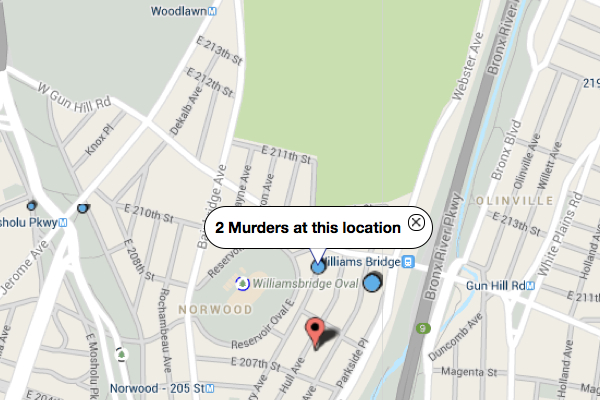
Photo by: NYPD
Sometimes we laugh to cope. As a newly arrived outsider you quickly become aware there is a dark side to humor in the United States.
A story came over the TV that a man was murdered on a street close to where my wife and I live. The first thought as we watched eyes wide open: naturally, questions about those who live around you.
So I did a search on violence and New York on my laptop. Following nine people being shot and one killed near the Empire State Building in 2012 the-then mayor stated; “New York City, as you know, is the safest big city in the country and we are on pace to have a record low number of murders this year but we are not immune to the national problem of gun violence.”
I was intent on finding out more about the surrounding culture towards violence when walking to the local diner for breakfast that morning. A surprising response to the tragedy came from someone who eats their most days, stating it was probably over a women. That’s not what I expected, presuming it was over drugs and money. The customer had five friends who lost life that way, over a love triangle. He paused then said: “One man gets killed, one gets life, and the women finds someone else,” then turned around and continued reading his paper.
I was unnerved, because he said that far too nonchalantly. People are killed where I come from, but not in such a constant manner that a dark catch phrase is coined about it in the community.
So I was suspicious on exiting the diner. Maybe this man likes to spin stories.
Walking back into my hotel, a likeable voyeur was at the front desk. So I put it to him. He shrugged his shoulders and asked where it happened. Then watched him calculate the location from his known surroundings. He said “Oh, I used to live three blocks from there. It’s a drug corner. It was either over drugs or a women.”
He spoke about the jealousy that exists when you get many people cramped into a small block. Then he said, “One man gets killed, one gets life, and the women finds someone else.”
I retreated to a safe and cozy Manhattan apartment.
Once there, conducting further research, much of it on how American’s views towards violence center on media exposure to it. Forensic psychiatrists Vasilas Pozious, Proveen Kambam and Eric Bender believe their comprehensive Lancet review of literature on media violence is compelling: “The weight of studies supports the position that exposure to media violence leads to aggression, desensitization toward violence and lack of sympathy for victims of violence, particularly in children.”
However, Christopher J. Ferguson, associate professor of psychology and communication at Texas A&M International University, disputes such a view. “As media violence has become more prevalent, societal violence, including youth violence, has declined to 40-year lows. Societies that share or exceed our media culture in violence, ranging from Canada to the Netherlands to Japan, have far lower violence rates even if you factor out gun violence.”
Here’s what is undisputed: The homicide rate in the U.S is astronomical in comparison to other Western countries. For example, according to the Centers for Disease Control and Prevention, in 2010 there were 16,238 people who were victims of homicide in the U.S; with 5.2 homicides per 100,000 of deaths. In Australia in the same year, the Australian Bureau of Statistics found there were 260 murders; that is, 1.2 victims per 100,000 population.
Perceptions towards violence by Americans may or may not be related to being desensitized. In a community where people regularly hear of drastic acts with such dire consequences, maybe humor is a natural replacement for fear.








